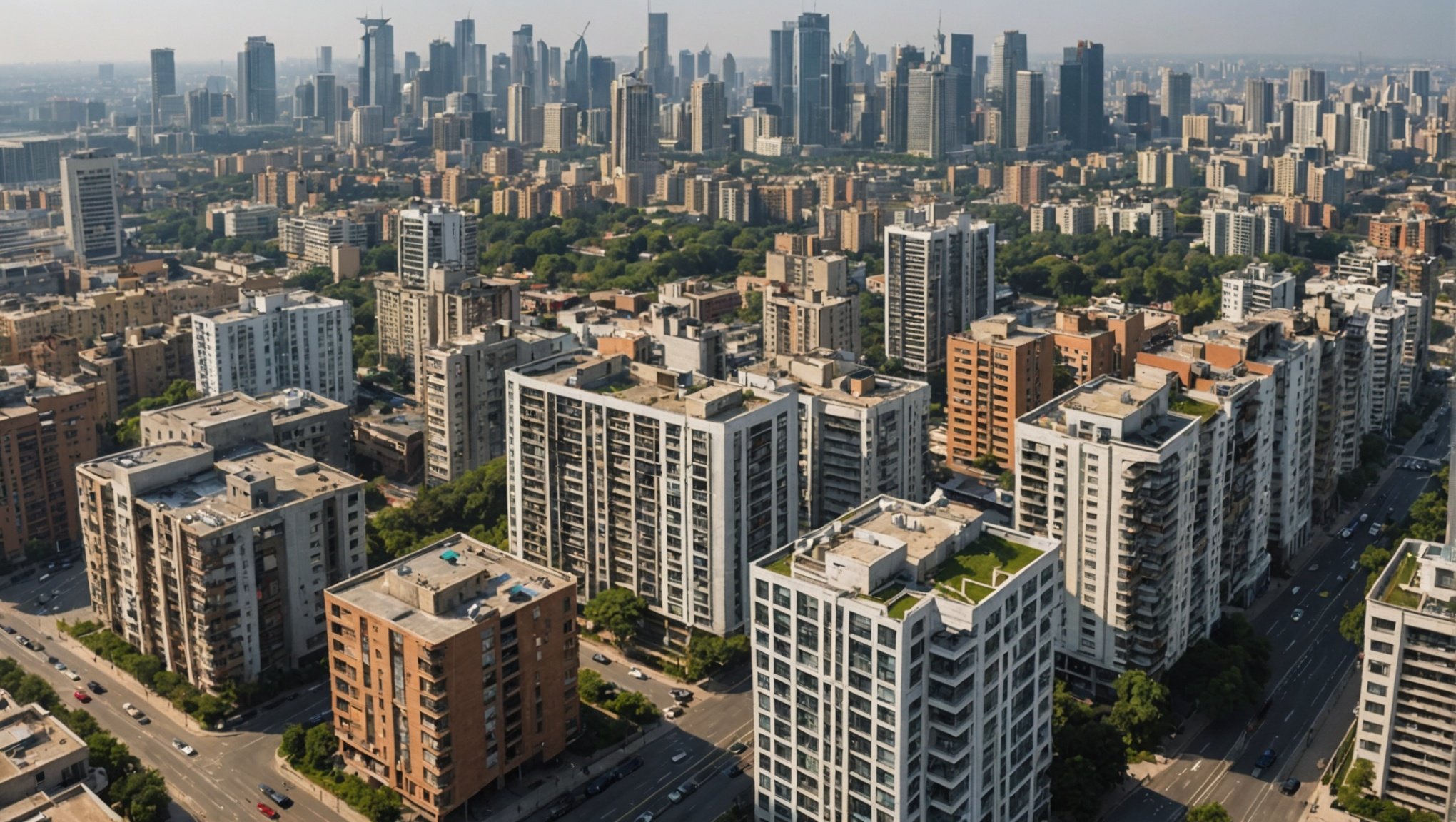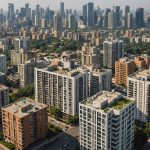With the rising trend of social impact investing in the real estate market, understanding the socio-economic environment has become a crucial factor before making a property purchase. Investors need to analyze various aspects like housing prices, urban climate, residential homeownership trends, and capital values, among other elements. This approach can significantly influence the outcome of the investment. It can also help investors create a positive impact on the local community while also achieving a decent financial return. This article will guide you on assessing the socio-economic environment before purchasing urban property.
Understanding the Importance of Socio-Economic Factors in Real Estate
Before investing in urban property, it’s essential to understand the socio-economic factors that influence the real estate market. These include demographic trends, income levels, employment rates, and more. These factors can affect housing prices, demand for residential units, and the overall value of your investment.
Avez-vous vu cela : How to Ensure Compliance with the Latest UK Construction Safety Regulations?
Demographic trends such as population growth, age distribution, and migration patterns can significantly impact housing demand. High levels of income and employment can increase homeownership rates and subsequently push property prices up. On the other hand, areas with low income and high unemployment rates can lead to a decrease in housing demand, thus lowering property prices.
Socio-economic factors are also closely linked with the urban climate. Areas with a growing economy, vibrant culture, and robust infrastructure can attract more people, thus increasing the demand for housing. Conversely, areas with a declining economy, lack of amenities, and poor infrastructure can lead to a decrease in housing demand and lower property prices.
Cela peut vous intéresser : What Are the Challenges and Rewards of Developing Underutilized Land in UK Cities?
How to Analyze the Socio-Economic Environment
Analyzing the socio-economic environment involves scrutinizing a variety of data sources to gain a comprehensive understanding of the area where you plan to invest. You might want to research unemployment rates, income levels, population trends, crime rates, educational attainment, and other related metrics.
Data on unemployment rates and income levels can give you a sense of the economic health of the area. High unemployment rates can indicate a struggling economy, which could affect property values and rental rates. On the other hand, areas with high income levels could indicate a strong economy, potentially leading to increased demand for housing and higher property values.
Population trends can provide insights into the demand for housing. Rapid population growth could lead to increased demand for housing, pushing property values and rental rates up. Conversely, areas with a declining population could see decreased housing demand, potentially leading to lower property values and rental rates.
The Impact of Social Factors on Real Estate Investments
Social factors play a significant role in the real estate market. These factors include cultural trends, social stability, crime rates, and the quality of local schools and healthcare facilities.
Cultural trends can significantly influence the demand for housing. For instance, areas with a vibrant arts scene or a reputation for being a tech hub can attract people, leading to increased housing demand. On the other hand, areas with cultural trends that are seen as negative can decrease housing demand.
Social stability is another critical factor. Areas with high levels of social instability, such as high crime rates or political unrest, can discourage people from moving there, leading to decreased housing demand and potentially lower property values. Conversely, areas with high levels of social stability can attract people, leading to increased housing demand and potentially higher property values.
The Role of Environmental Factors in Property Investment
Environmental factors can also significantly impact real estate investments. These factors include the area’s climate, availability of natural resources, pollution levels, and susceptibility to natural disasters.
The climate can influence the demand for housing. For instance, areas with a mild climate can attract people, leading to increased housing demand and potentially higher property values. Conversely, areas with harsh climates can deter people, leading to decreased housing demand and potentially lower property values.
Pollution levels can also impact the demand for housing. People are generally reluctant to live in areas with high pollution levels, which can decrease housing demand and potentially lower property values. Conversely, areas with low pollution levels can attract people, leading to increased housing demand and potentially higher property values.
Using Literature to Enhance Your Understanding of the Socio-Economic Environment
Finally, don’t underestimate the power of literature in understanding the socio-economic environment of the area where you’re planning to invest. Reports, books, and academic studies can provide in-depth insights into the area’s history, culture, economy, politics, and more. These resources can help you gain a deeper understanding of the factors that might influence the real estate market in the area.
For instance, academic studies might provide insights into the area’s demographic trends, economic development, cultural changes, and more. Reports from real estate firms or financial institutions might give you a sense of the current state of the real estate market in the area, including housing prices, demand for housing, and potential future trends.
In conclusion, understanding the socio-economic environment of an area is crucial before investing in urban property. By considering socio-economic factors, you can make informed decisions that could lead to fruitful investments while also supporting the local community.
The Influence of Green Spaces and Climate Change on Urban Property Values
The quality of the environment in an urban area also plays a significant role in influencing property values. One key environmental factor is the availability and quality of green spaces. Areas with abundant, well-maintained green spaces can be very attractive to potential homebuyers, leading to increased housing demand and higher property values.
Urban green spaces offer numerous social benefits, including opportunities for recreation, enhanced mental health, and improved air quality. They also contribute to social capital by providing spaces where residents can interact and form social networks. In addition, green spaces can also provide crucial ecological services, such as stormwater management and biodiversity conservation.
Moreover, the impact of climate change on urban areas is a growing concern that real estate investors need to consider. Increasing temperatures, rising sea levels, and extreme weather events can significantly affect property values. For example, properties in low-lying coastal areas are at risk from sea-level rise, while properties in areas prone to wildfires or extreme heat may also see their values decrease.
Conversely, properties in areas that are taking proactive steps to mitigate the impacts of climate change may see their values increase. This could include areas that are investing in green infrastructure, promoting sustainable transportation, or implementing policies to reduce greenhouse gas emissions.
The Role of Social Goals in Real Estate Investing in Developing Countries
For investors interested in real estate abroad, particularly in developing countries, understanding the socio-economic environment becomes even more critical. Investing in these regions requires an understanding not only of the local real estate market but also of the broader socio-economic context.
In these regions, social goals become increasingly important. Investors can contribute to socio-economic development by investing in affordable housing, promoting sustainable construction practices, and supporting community development initiatives.
For instance, in densely populated areas like Hong Kong, the high demand and limited supply have led to soaring housing prices. By investing in affordable housing projects, real estate investors can help address this issue while also achieving a decent financial return.
Meanwhile, in areas with low income, investors can contribute to socio-economic development by investing in projects that provide quality housing for low-income residents. These investments can help improve living conditions, promote social stability, and create local jobs, all of which can contribute to boosting the local economy.
In conclusion, assessing the socio-economic environment is a crucial step in making sound urban property investments. By considering factors such as demographics, income levels, social stability, environmental quality, and social impact goals, investors can make informed decisions that not only generate financial returns but also contribute to social and environmental sustainability.






